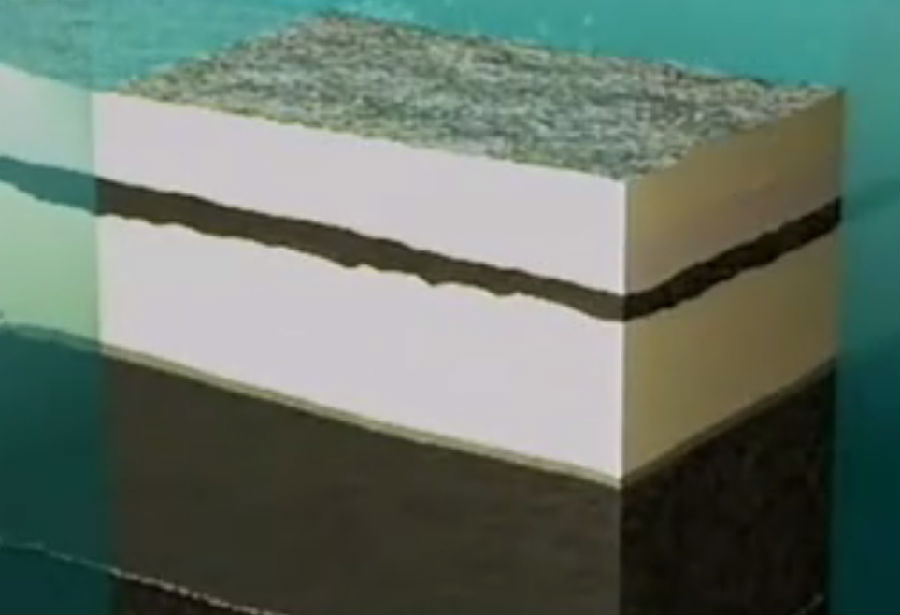It was a Eureka moment, absolutely.
這是激動人心的時刻,絕對是。
We danced, we jumped up and down, and said we've got it.
我們跳舞,歡呼雀躍,我們找到它了。
They were excited because these spherules were eight metres below where any had been found before.
他們激動是因為這些小球體所在的位置比之前找到的地方低了8米。
In geology, lower normally means further back in time,
在地質學上,位置低一般意味著年代更為久遠,
so for them it suggested an entirely different explanation for the whole rock formation and the extinction of the dinosaurs.
所以在他們看來,所有這些巖石的形成原因只能是完全不同的另一種解釋,當然還有恐龍滅絕的原因。
It was all to do with time.
這一切都與時間有關。
After the Chicxulub impact, the spherules settled on the sea floor within minutes.
希克蘇魯伯大碰撞后,小球體幾分鐘內便落到海底。

These were the spherules just discovered by Doctor Keller.
它們就是Keller博士發現的小球體層。
On top of the spherules, there seemed to have been a period of normal sedimentation, eight metres of mud had built up.
小球體層上面似乎有一個正常沉淀的時期,堆積了8米厚的泥沙。
According to Keller and Stinnesbeck, this would have taken two hundred and seventy thousand years.
按照Keller和Stinnesbeck的說法,這得經過27萬年的時光。
Next came the limestone layer, this too could have taken thousands of years to form.
接下來便是石灰巖層,它也需要經過上千年才能形成。
Only then came the sand, washed in to form the sandstone.
然后才輪到沙子,沖積到此形成沙巖。
Then those fine grained layers built up by sedimentation, that could have taken centuries.
接著那些細顆粒層便因為沉積作用而開始形成,這需要經歷幾個世紀。
Then worms apparently had months, maybe years in which to colonise some of the layers.
后來蠕蟲顯然在某些地層中住了幾個月,甚至可能是幾年。
And only then, at the very top came the Iridium layer, which coincided with the extinction of the dinosaurs.
最后才輪到見證恐龍滅絕的頂部銥元素層。
But by now Keller and Stinnesbeck calculated that three hundred thousand years had passed since the Chicxulub impact.
不過根據Keller和Stinnesbeck的計算,此時距希克蘇魯伯大碰撞已過去了30萬年。











